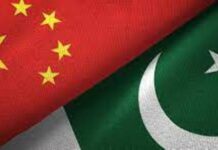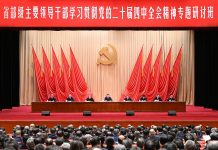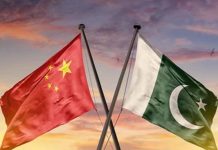Spring 2022 can be described as one of “ups and downs” for the people of Shenzhen, a global tech metropolis in the southern province of Guangdong. While helping neighboring Hong Kong Special Administrative Region battle its fifth pandemic wave, Shenzhen itself has come face to face with an abrupt surge in COVID-19 infections, reporting 370 confirmed locally transmitted cases from March 6 to 16. All bus and subway systems were suspended, and businesses, except those providing essential services, were closed from March 14 to 20.
Companies have been feeling the strain. Foxconn, formally known as Hon Hai Technology Group, the world’s largest contract electronics manufacturer and a major assembler of Apple Inc., said in a statement that the date of its Shenzhen factory resumption is to be advised by the local government. “Due to our diversified production sites in China, we have adjusted the production line to minimize the potential impact,” the company said.
At present, it seems unrealistic to avoid the impact the epidemic will have on the economy, and the situation in Shenzhen will definitely affect the supply chain, according to Sang Baichuan, a professor at the University of International Business and Economics in Beijing. “Challenges are definitely there, and what we need to do, is to mitigate the downward pressures,” he told Beijing Review.
Shenzhen is not the only one facing this new ordeal. From March 1 to 14, 28 provincial-level regions on the Chinese mainland reported more than 15,000 local infections, according to the National Health Commission (NHC).
Clinging to life
The Omicron BA.2 variant has been identified as the culprit of recent COVID-19 resurgences, and the high proportion of asymptomatic patients or mild cases in the latest outbreak also makes it hard to detect the virus, Wu Zunyou, chief epidemiologist with the Chinese Center for Disease Control and Prevention, wrote on Weibo, China’s Twitter-like platform, on March 14.
Wu further noted that the dynamic zero-COVID-19 policy will still be the country’s general guideline in its push to contain the epidemic. Under the overarching goal of preventing imported infections and domestic flareups, this policy means that whenever a new local outbreak occurs, measures will be taken to promptly stem the spread of the virus and have all cases cleared.
All affected regions have ramped up their containment measures including closed management and massive nucleic acid testing. In Jilin Province, where the outbreak is especially severe, makeshift hospitals have been built in preparation for a possible rise in in-patient bed demand.
And more efforts are in the making. The NHC announced on March 11 that the country would begin using COVID-19 antigen home-testing kits as a supplementary method to improve the country’s early detection capacity.
With effective measures in place, Wu said he is confident that the latest outbreak will be largely controlled over the coming weeks.
Today, as many countries are learning to live with the virus, some Western media wonder if the Chinese approach can prove effective against the highly contagious Omicron variant.
The dynamic zero-COVID-19 approach does not mean zero infections; it simply aims to quickly contain any outbreaks. “China has followed the strategy for two years now, and it has demonstrated successful,” Zhang Boli, an academician with the Chinese Academy of Engineering and President of the Tianjin University of Traditional Chinese Medicine, said.
Zhang disagrees with the argument that Omicron is just a “more serious flu,” adding that although the strain only causes mild symptoms, it can seriously harm the very young and elderly, especially those unvaccinated.
There is no denying that containment measures like quick lockdowns, mass screenings and large-scale inoculations temporarily impact daily life and local business. But they’re also the most effective way to reduce infections and ensure the resumption of normal life, according to Sang.
Many countries in the world at this point are lifting the majority of their COVID-19 containment measures, recognizing that their economic recovery may come at a risk, Sang said. “But our principle is that the people’s safety comes first. And if the epidemic cannot be effectively controlled, its economic impact will be even worse,” he explained.
Reality and reason
China has set its 2022 economic growth target at around 5.5 percent at the recently concluded session of the National People’s Congress (NPC), the highest state organ of power. Leading economist Zhu Min said it still marks robust growth considering global economic uncertainties, which in turn demonstrates the nation’s commitment to worldwide economic recovery.
“This is a very important and encouraging signal. China will have a positive role in the development of the global economy this year,” Zhu, former Deputy Managing Director of the International Monetary Fund, told Beijing Review.
Against the 8.1-percent GDP growth in 2021, some argued that the 5.5-percent target was too conservative. “The GDP target was set taking into account an external environment that faces many unprecedented challenges,” Zhu said. The year 2022 will, contrary to hopes, not be free from COVID-19-related disruption; instead, regarding the situation in Ukraine, the virus has been replaced with a more interconnected yet equally gloomy scenario, according to him.
The ongoing Russia-Ukraine conflict poses a number of global economic consequences: Energy prices have already surged to record highs, and supply chain disruptions are spreading, he said.
Nevertheless, China is well-positioned to achieve its GDP growth target given it features ample room for macroeconomic policy to cushion short-term pressures, Zhu explained. “Challenges lie ahead, indeed, but it is still achievable.”
Along with the GDP target, the government work report, adopted during the NPC session, lists a wide selection of other development goals, including employment, investment, foreign trade and inflation. This year, China aims to create over 11 million new urban jobs and maintain a surveyed urban unemployment rate of equal to or under 5.5 percent, according to the report. -The Daily Mail-Beijing Review News Exchange Item





